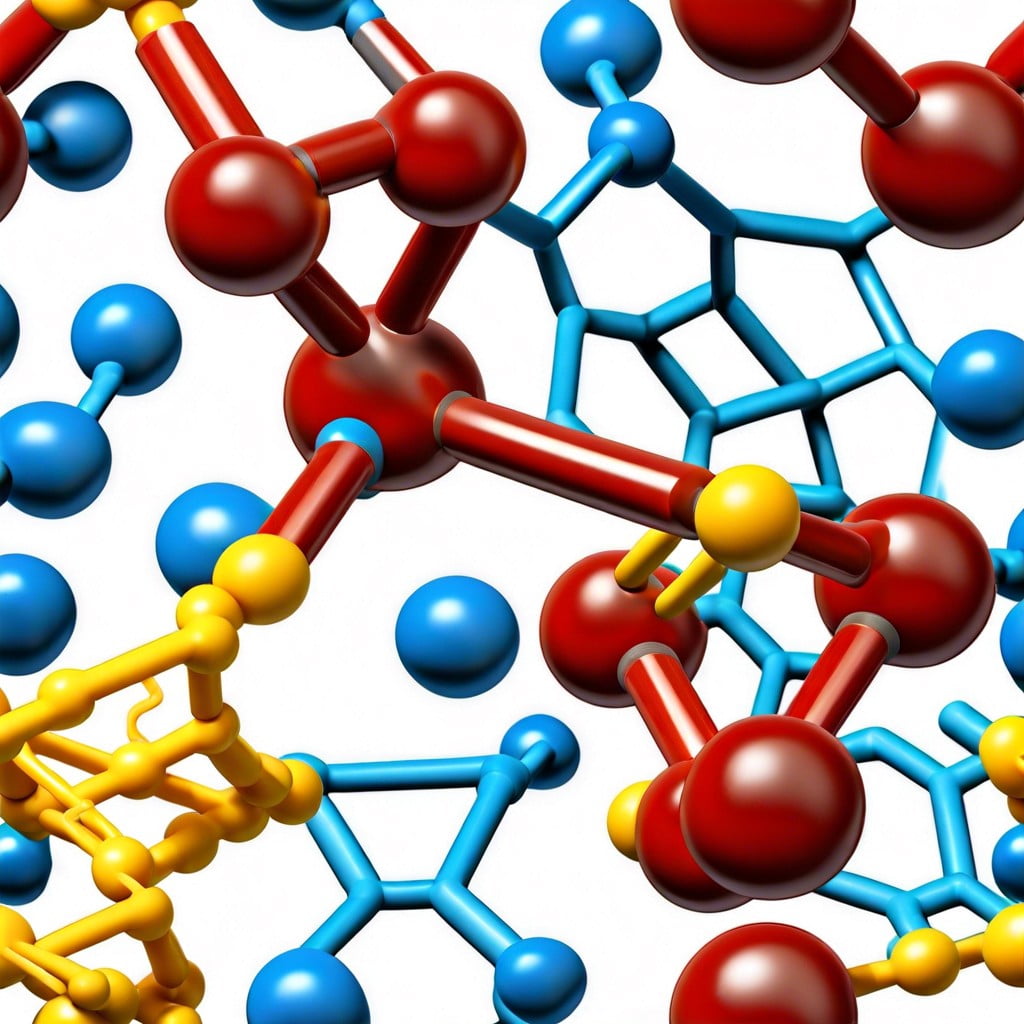Discover how the polymerization of carbohydrates creates materials with unique properties used in construction and their applications in the industry.
Key takeaways:
- Carbohydrate polymers are classified based on the number of sugar units they contain.
- Monosaccharides are the building blocks for more complex carbohydrates.
- Oligosaccharides play important roles in cellular recognition processes and gut health.
- Polysaccharides serve as energy reserves and provide structural support in plants and animals.
- The structure of carbohydrate polymers influences their properties and functions.
Types of Carbohydrate Polymers

Carbohydrate polymers are classified based on the number of sugar units they contain. Monosaccharides are the simplest form, consisting of single sugar molecules such as glucose and fructose. They are the building blocks for more complex carbohydrates.
Oligosaccharides are composed of a few sugar molecules linked together. They typically consist of 2 to 10 units, and common examples include sucrose and lactose. These compounds often play roles in recognition and signaling processes within cells.
Polysaccharides are large, complex molecules made up of many sugar units. These can range from a few hundred to several thousand monosaccharide units. Starch and cellulose are polysaccharides that serve as energy storage and structural materials, respectively. Their properties vary greatly, from the water-soluble gums used in food thickening to the tough, insoluble fibers in plant cell walls.
Monosaccharides
Monosaccharides are the simplest form of carbohydrates and are often referred to as the building blocks for more complex carbohydrates. They consist of a single sugar molecule and cannot be further hydrolyzed to simpler chemical compounds. The general formula for monosaccharides is (CH2O)n, where ‘n’ ranges from three to seven.
There are several types of monosaccharides, distinguished by the number of carbon atoms they contain:
- Trioses (C3H6O3) are the simplest monosaccharides.
- Tetroses (C4H8O4) have four carbon atoms.
- Pentoses (C5H10O5) include ribose, which is vital for RNA structure.
- Hexoses (C6H12O6), like glucose, are a primary source of energy in cells.
- Heptoses (C7H14O7) are less common but are integral to certain metabolic processes.
The most common monosaccharides include glucose, fructose, and galactose. These sugars are critical in human metabolism:
- Glucose is the central energy source in most life forms.
- Fructose, found in many fruits, is a common sweetener.
- Galactose, a component of milk sugar lactose, is necessary for the synthesis of glycolipids and glycoproteins.
In the body, enzymes break down these individual sugars from food, allowing them to be absorbed into the bloodstream. Understanding monosaccharides is essential to appreciate how more complex carbohydrate polymers function in both biology and various applications.
Oligosaccharides
Oligosaccharides consist of a few monosaccharide units, typically ranging from two to ten. These sugar molecules are linked together by glycosidic bonds, which form through a reaction between the hydroxyl groups of the monosaccharides.
They serve as important intermediates in the metabolism of complex carbohydrates and also play a crucial role in cellular recognition processes. This is facilitated by their ability to adopt multiple specific conformations, enabling them to participate in precise interactions with proteins and other molecules within biological systems.
In terms of dietary significance, oligosaccharides are known to promote the growth of beneficial gut bacteria, thus contributing to gastrointestinal health. These compounds can be found naturally in foods such as onions, chicory, garlic, and leeks, or they can be synthesized for various food and pharmaceutical applications.
Polysaccharides
Polysaccharides are long-chain carbohydrates composed of numerous monosaccharide units. When these units interlink, they create a variety of structures essential for both plants and animals. The chains might be straight or branched, leading to diverse functionalities in nature and industry. Here’s what you need to know:
- Storage polysaccharides such as starch in plants and glycogen in animals serve as energy reserves.
- Structural polysaccharides like cellulose provide rigidity to plant cell walls, and chitin offers a similar function in the exoskeletons of arthropods.
- The physical properties of polysaccharides, such as solubility and their ability to form gels, make them valuable in numerous applications, from building materials to food products.
These polymers can be highly durable and resistant to degradation, which is why cellulose is a valuable material in building sustainable homes and why chitin derivatives are explored for advanced construction materials.
Understanding the role of polysaccharides opens the door to harnessing their natural capabilities for innovative uses in construction, ranging from insulation to environmentally friendly adhesives.
Structure of Carbohydrate Polymers
Carbohydrate polymers are complex molecules composed of long chains of monosaccharide units. These individual sugar units are linked together through a reaction that forms a bond known as a glycosidic linkage. The specific type of glycosidic bond affects the polymer’s structure and properties.
The structure can be linear or branched. Linear structures, where each sugar unit is linked to only two others, are typically strong and insoluble, ideal for building materials and fibers. Branched structures have points where three or more sugar units are linked, creating a more complex network that can have different functional properties depending on the degree of branching.
The arrangement of the sugar units also impacts the polymer’s behavior. For instance, the orientation of the glycosidic linkages can result in differing degrees of flexibility or rigidity in the polymer chain, influencing its ability to form certain shapes or its solubility in water.
These structural variations underpin a multitude of functions carbohydrate polymers fulfill across various applications, from the tensile strength of natural fibers to the energy releasing capability of starch in our diets.
Recap




